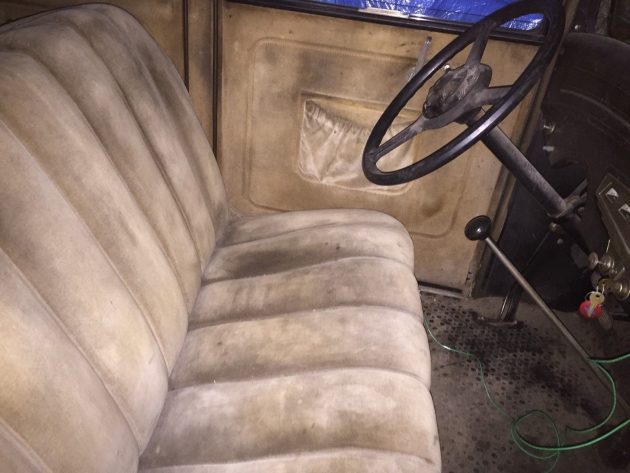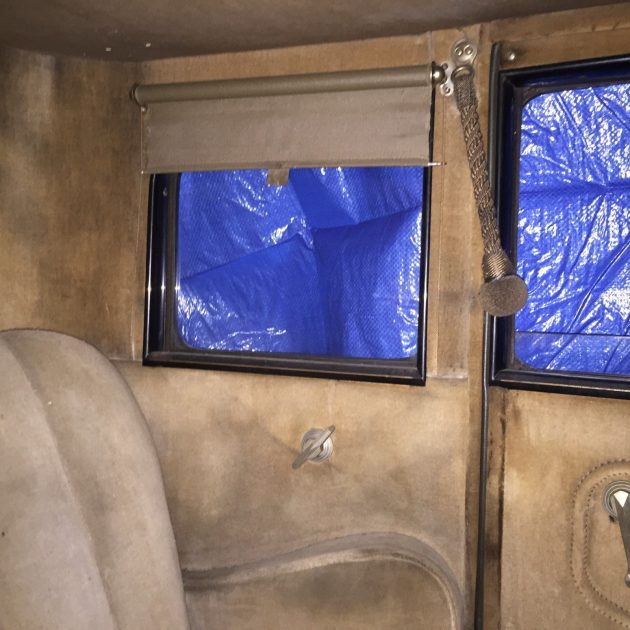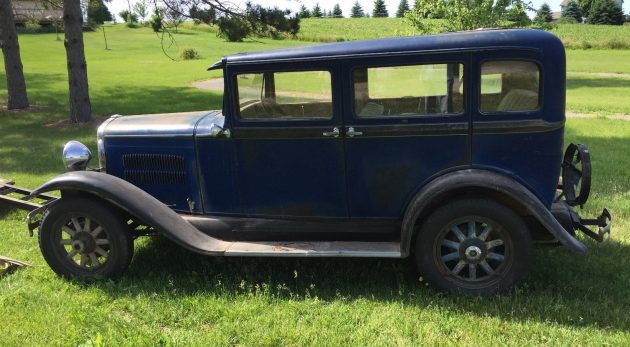Essex is not a familiar name to a lot of people, but when this car was built it was actually a Hudson, the third best selling car in America behind Chevy and Ford. Essex was an affordable and durable car and and was the the first affordable enclosed car. Hudson started Essex as a separate company, but soon became a Hudson model. This Essex listed on eBay in DeKalb, Illinois just might be a survivor rather than an older restoration. It was in a private collection for decades. The opening bid is $7,995 and there are no bids yet but there is a week left.
The interior looks very original with some wear and stains. With some cleaning, it might not be too bad.
It even has the original window shades and grab handle. The fabric has some stains but it appears very usable.
This engine is a 6 cylinder with about 160 CID and 55 HP. It runs well and is ready for use.
This Essex is mostly complete and original. It appears that with a little work, this could be a driver or with a little more work it could be a very nice driver. That opening bid is a little steep, so perhaps it will end without a bid. Hopefully this Essex will survive in its original form.









There is some interesting plumbing in the engine photo. A canister with one copper line connected with a number of vacant flare connections. Anyone know what it’s purpose is?
Also like the copper line coming off of the intake manifold / carburetor that looks like it has a drill bit stuck in it?
Overall, nice find. Love the old pre war machines. Keep em comming!
Looks like original AC. LOL
The canister is the original Stewart Warner vacuum tank. Vacuum tanks were the norm for cars through the 30’s. It draws das from the gas tank using vacuum and drops it into the Carburatator. They reguire pratacally no maintenance and are easy to repair should a fix be needed.
Inside the tank there is a float with 2 valves and an inner tank. When needed, the float opens the fuel line and closes the tank to atmosphere. This allows the vacuum to pull the gas from the tank to fill the inner tank. When the inner tank is full, the float closes the line Valve, opens the atmosphere Valve and allows the fuel to drop into the outer tank. From here the fuel gravity feeds into the carb. Only 4 moving parts.
Lewis, I think you mean they were the norm for cars up to 1930/31. 31 & onward U.S. vehicles I have seen use the normal camshaft operated diaphragm pump.
My Father (born in 1913) called the Essex an Ass-ache; he was quite the mechanic, so I didn’t doubt his words.. :)
A chance to use one of my ancient jokes!
“Whatever happened to your ethics?”
“I traded it in for a Hudthon!”
Hey, it was a big hit in 27!
The canister on the firewall is the original vacuum fuel pump. The line that is plugged is its vacuum supply. The other fittings are for fuel and vacuum operated devices like the windshield wipers. My guess is that someone installed an electric fuel pump.
The vacuum canister is possibly disconnected to start the engine with a bottle of petrol just to get the car moving for photos. The copper pipes wouldn’t just be left as they are. Also, the vacuum bottle is sometimes primed with fuel first by pouring it into a hole through the top.
Didn’t the Joads drive an Essex?